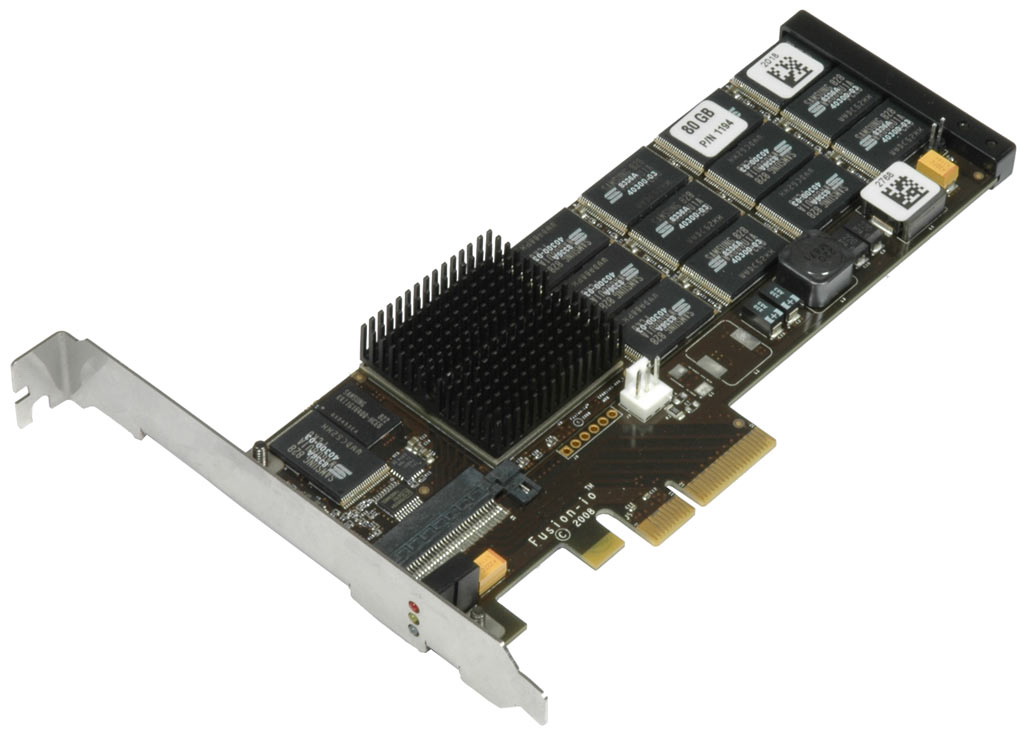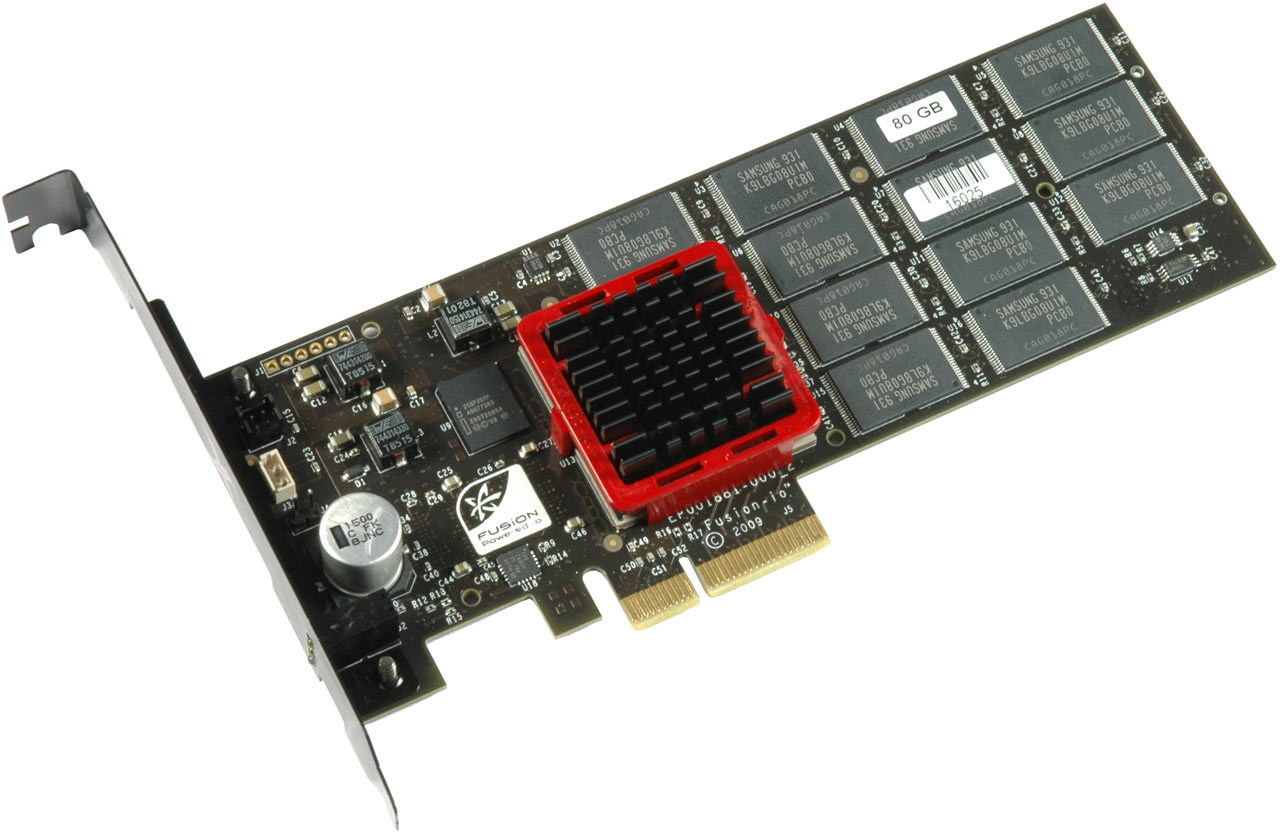Three PCI Express-Based SSDs: When SATA 6 Gb/s Is Too Slow
When it comes time to hunt down the ultimate in storage performance, you simply cannot settle for standard SSDs. Instead, look to PCI Express-based drives that circumvent the limitations of SATA. We have products from Fusion-io, LSI, and OCZ on the bench.
Fusion-io ioDrive (160/112 GB) And ioXtreme (80 GB)
The ioDrive, by Fusion-io, was released in early 2009 and is still one of the fastest flash-based storage solutions you can get. It is a PCI Express-based card that employs a four-lane first-generation interface with up to 1 GB/s bandwidth in each direction. While this sounds like a disadvantage compared to more modern PCI Express 2.0-based hardware, this is not the case. The device performs well.
Fusion-io talks about its use of enterprise-class performance and components. Specifically, there are versions with 80, 120, and 320 GB that utilize SLC NAND flash memory. Another 320 GB variant and a 640 GB flagship are based on MLC flash. Fusion-io offers drivers for all Windows operating systems between Windows XP and the latest editions of Windows Server 2003 and Windows 7, as well as VMWare ESX/ESXi and various Linux distributions.
The drive is not bootable and hence is only useful as a very fast layer for storage once the server or workstation is already online. The viability os such a solution is limited, but it does make sense for very particular environments where it'd be great to have 80, 120, or 320 GB of RAM were it not for the economic implications. Of course, SLC-based flash isn't as fast as system memory, but this is certainly better than short-stroked hard drives.
The second product by Fusion-io is the ioXtreme, which also arrived in our test lab in late 2009. It is technically similar to the ioDrive, meaning that it is also not bootable. We actually had a hard time finding it on the Fusion-io Web site, as it is not directly available in its Product drop-down. Our sample sports 80 GB, and several of these cards can be combined on a system to increase capacity.
The ioXtreme cards require a certain amount of system memory because the hardware does not support Native Command Queuing (remember, there is no SATA interface) and incoming commands need to be organized properly. Fusion-io supports maximum capacity mode, which provides the full 80 GB, or you can select improved write performance and maximum write performance modes. These will reduce the net capacity by 30% and 50%, but, obviously, improve write performance.
Both Fusion-io cards are half-height and hence they can be deployed even into very compact system designs. You will find more details and benchmarks of both modes in our initial ioXtreme review.
Get Tom's Hardware's best news and in-depth reviews, straight to your inbox.
Current page: Fusion-io ioDrive (160/112 GB) And ioXtreme (80 GB)
Prev Page PCI Express Storage Concepts Next Page LSI WarpDrive Acceleration Card SLP-300 (300 GB)
